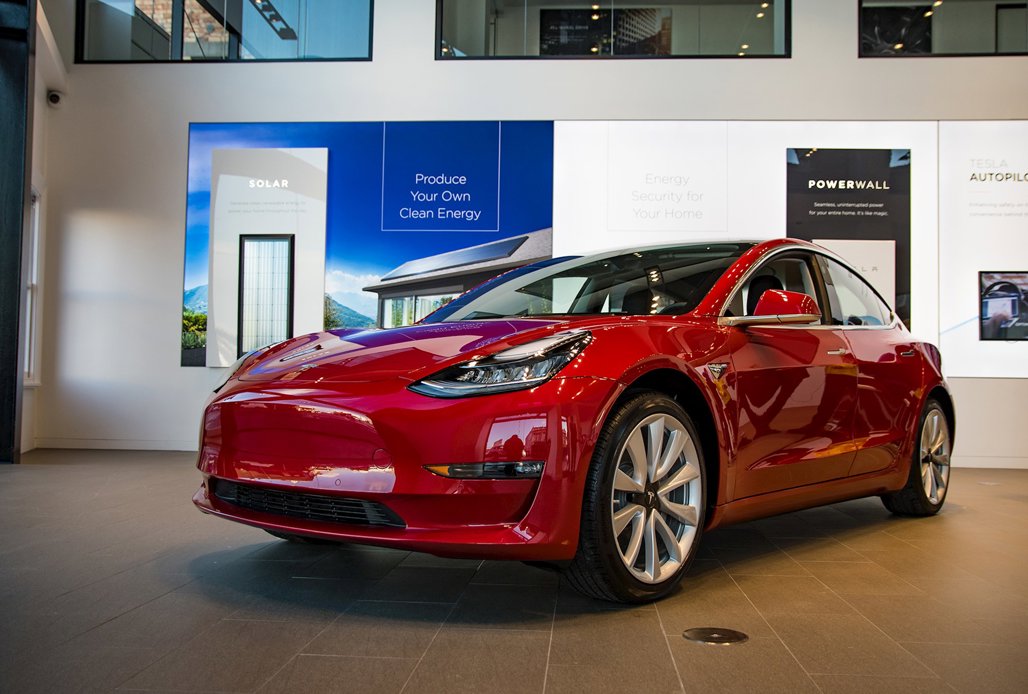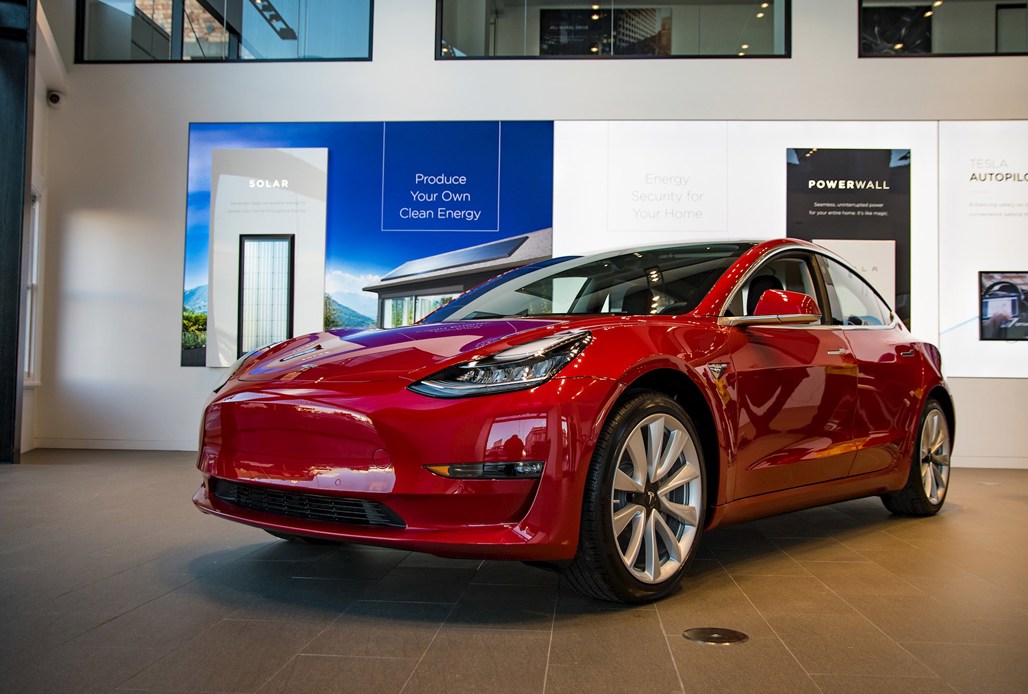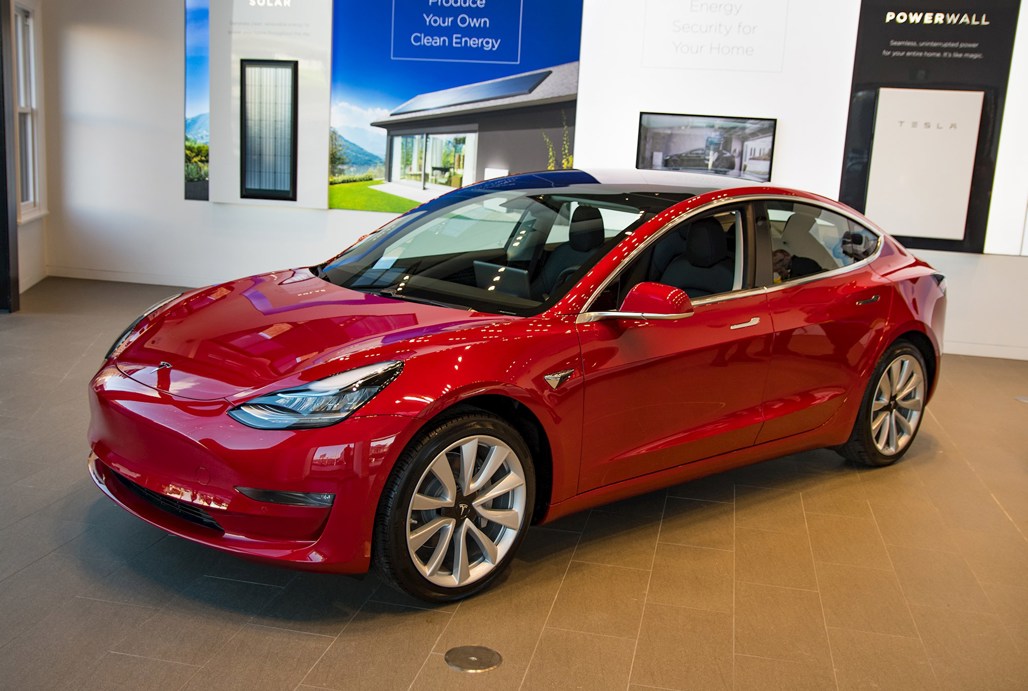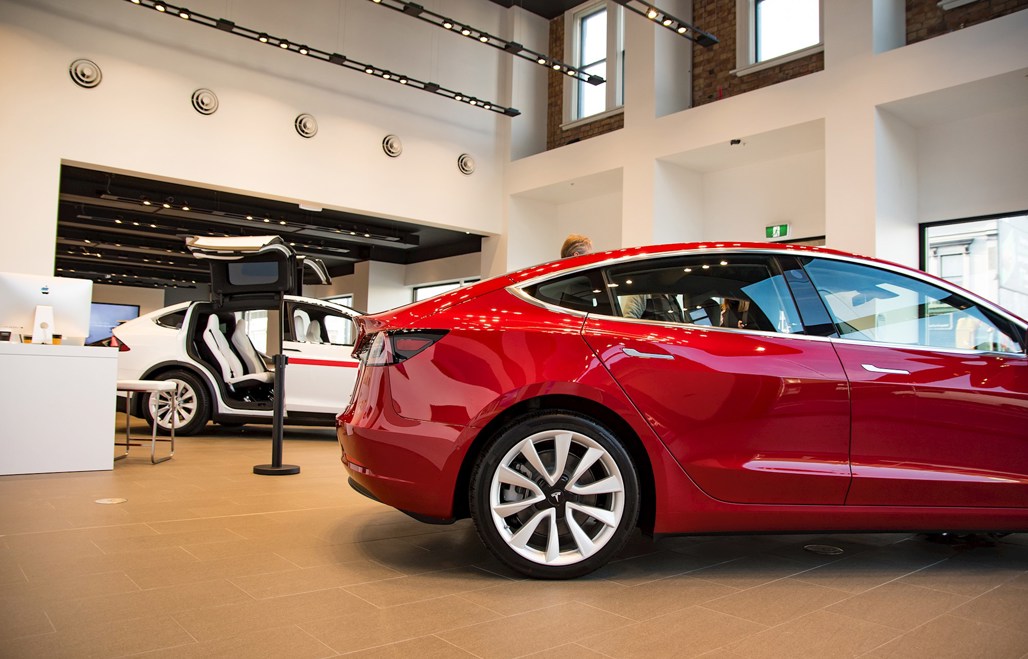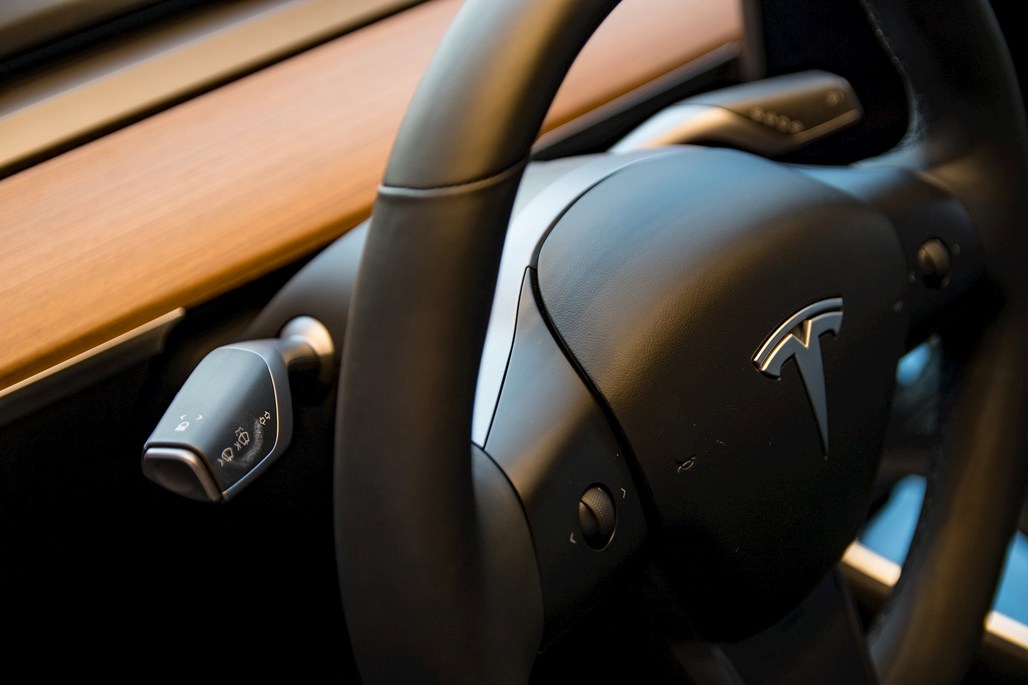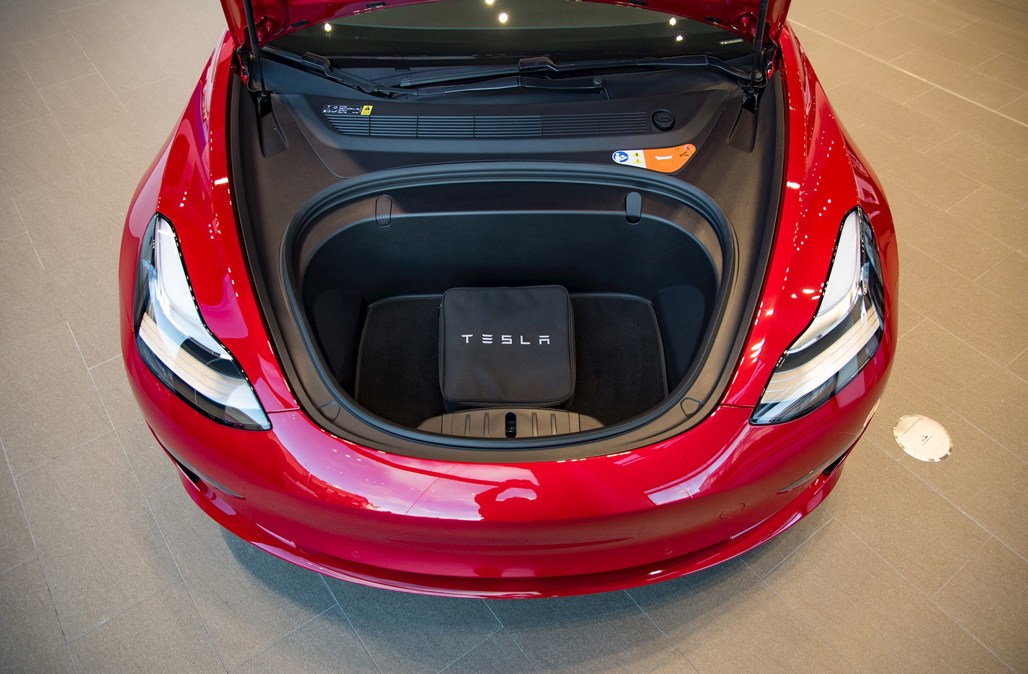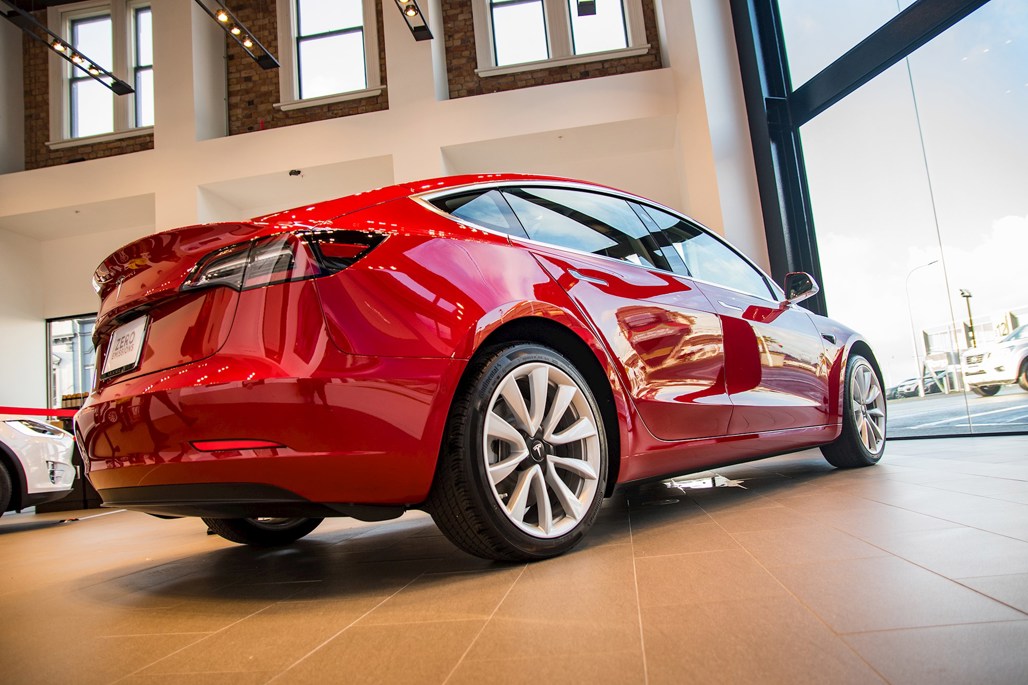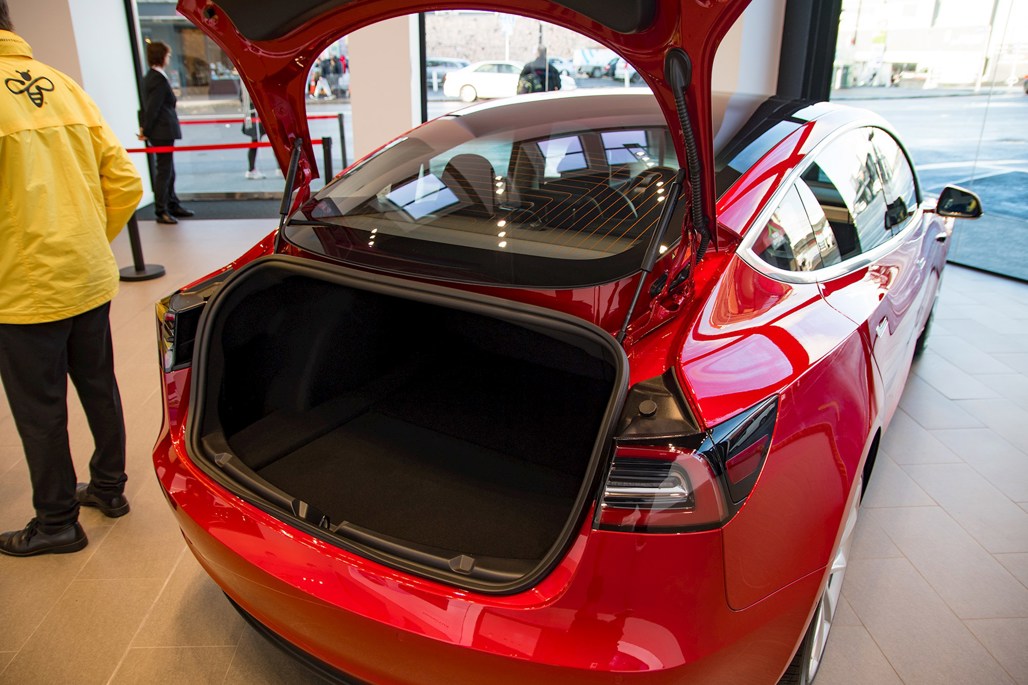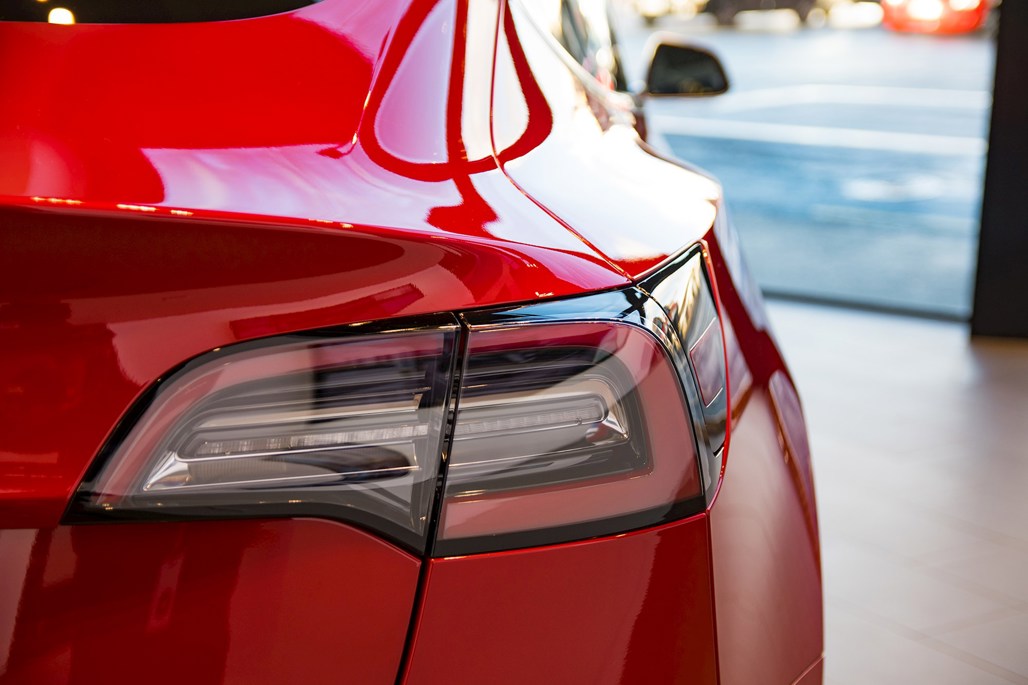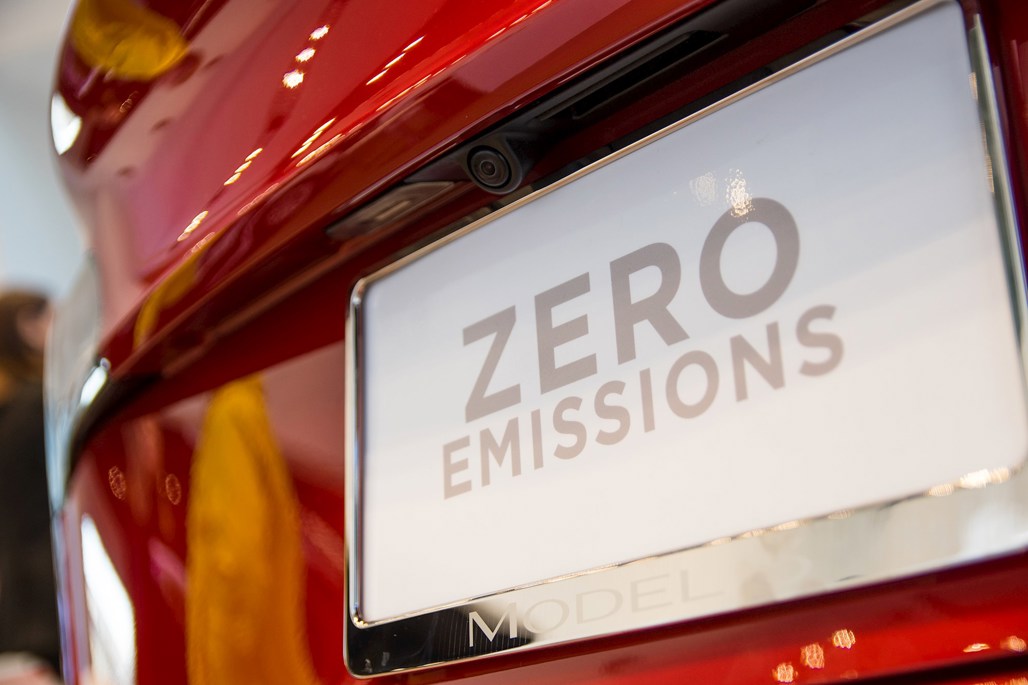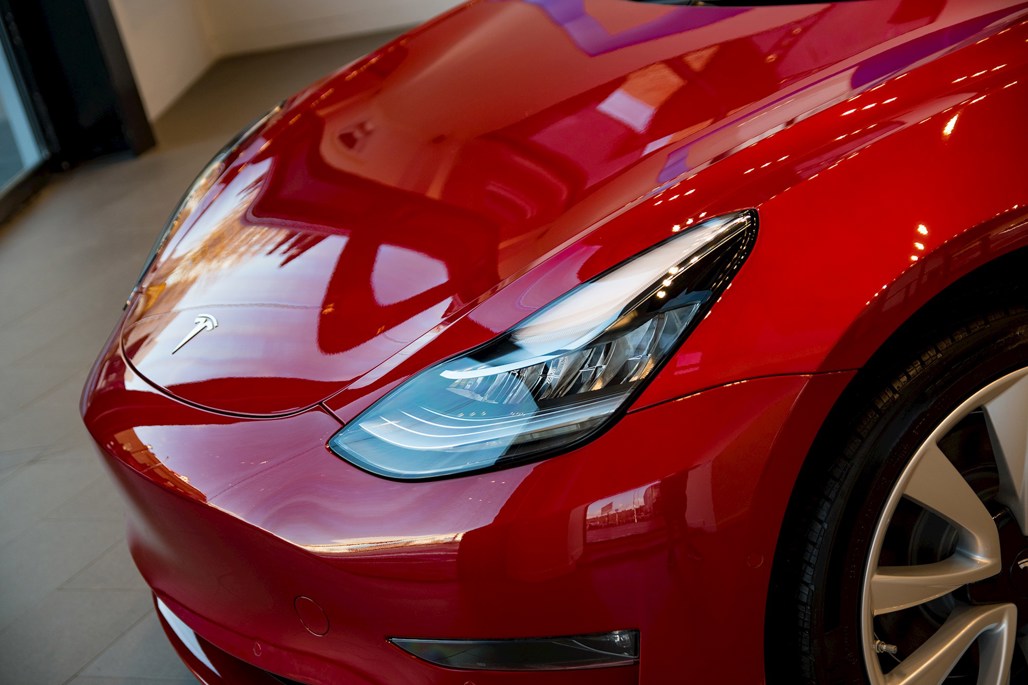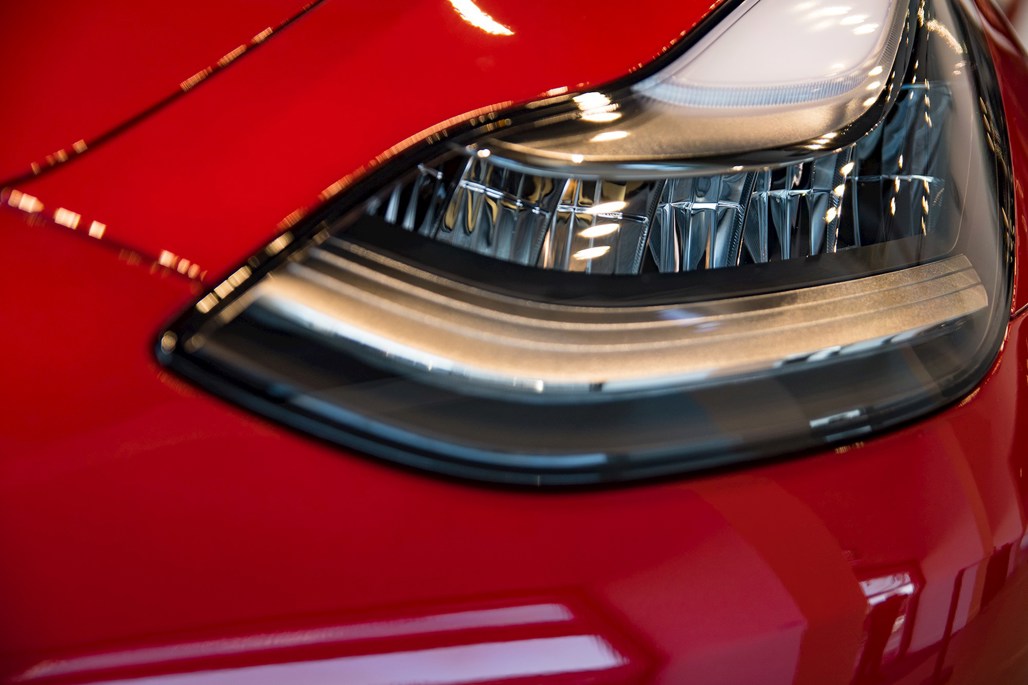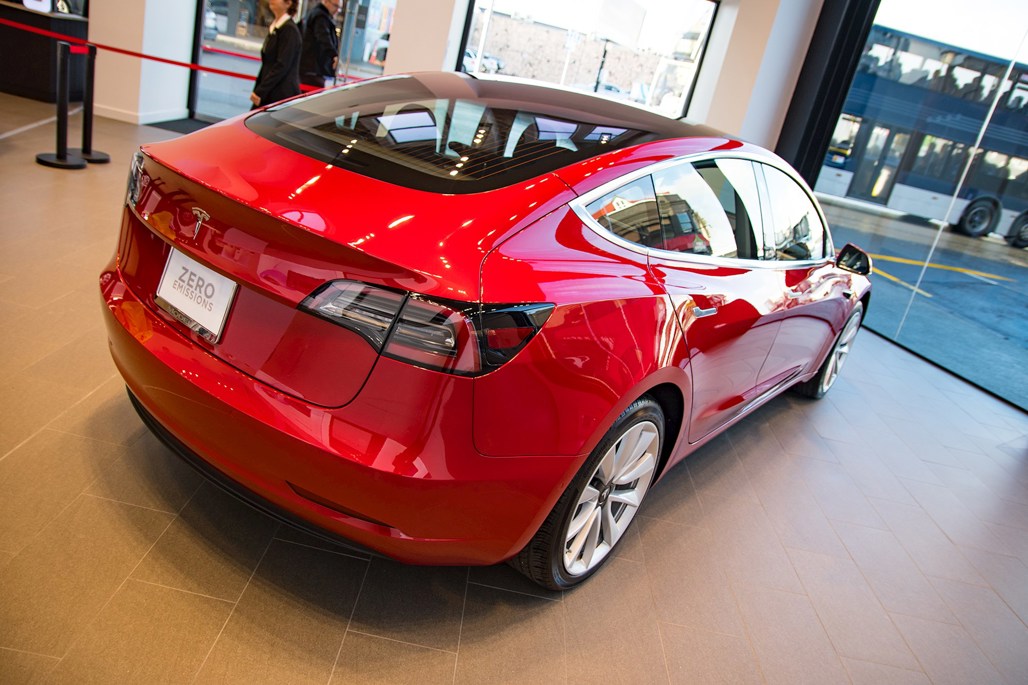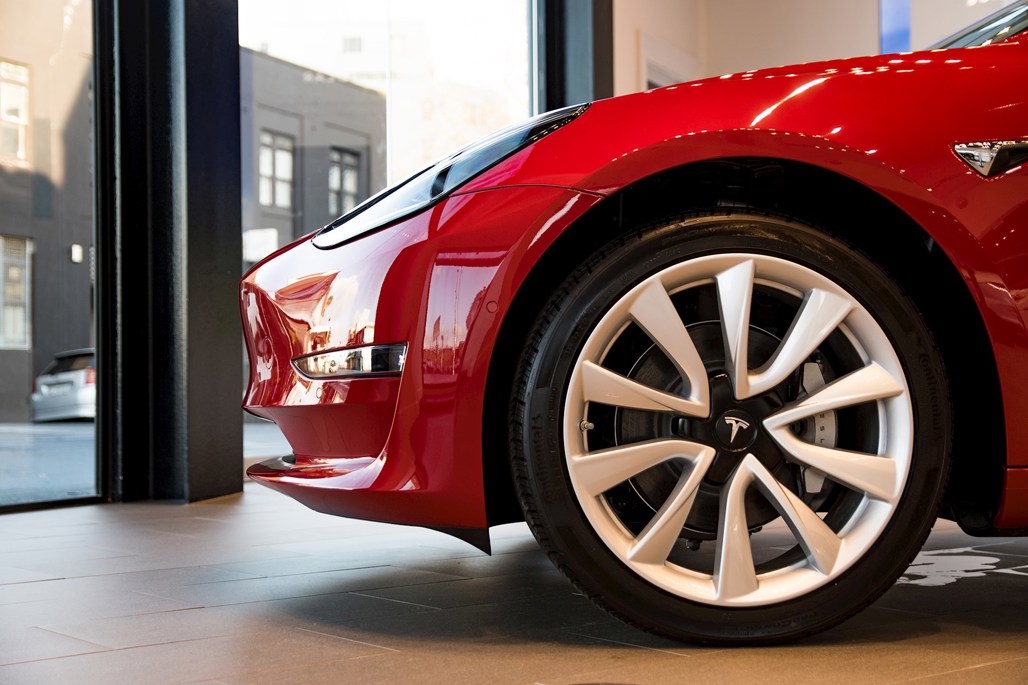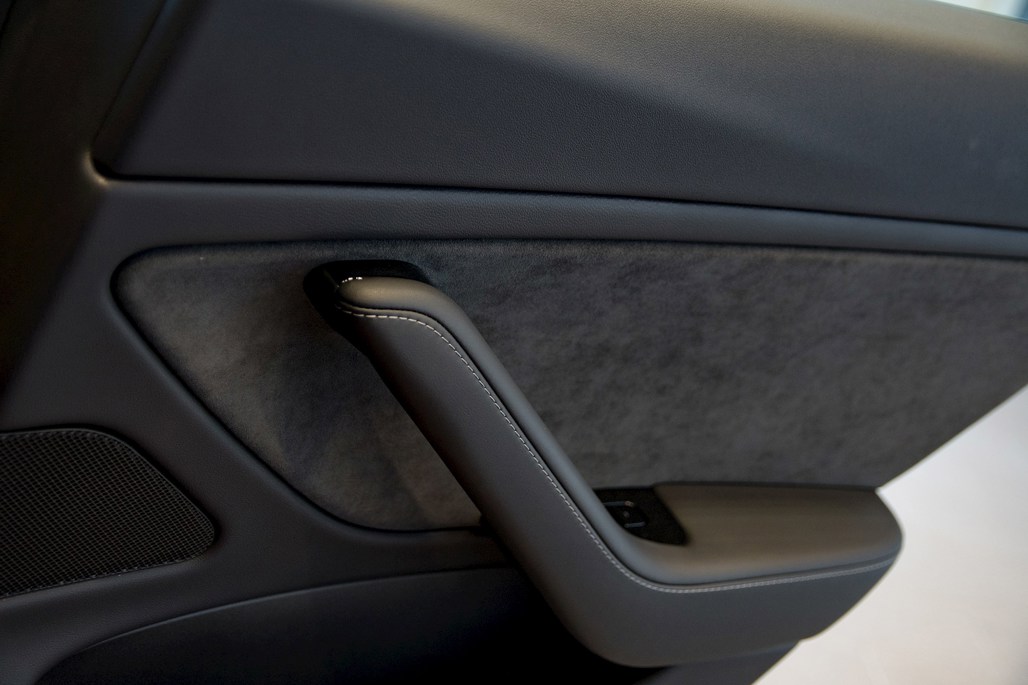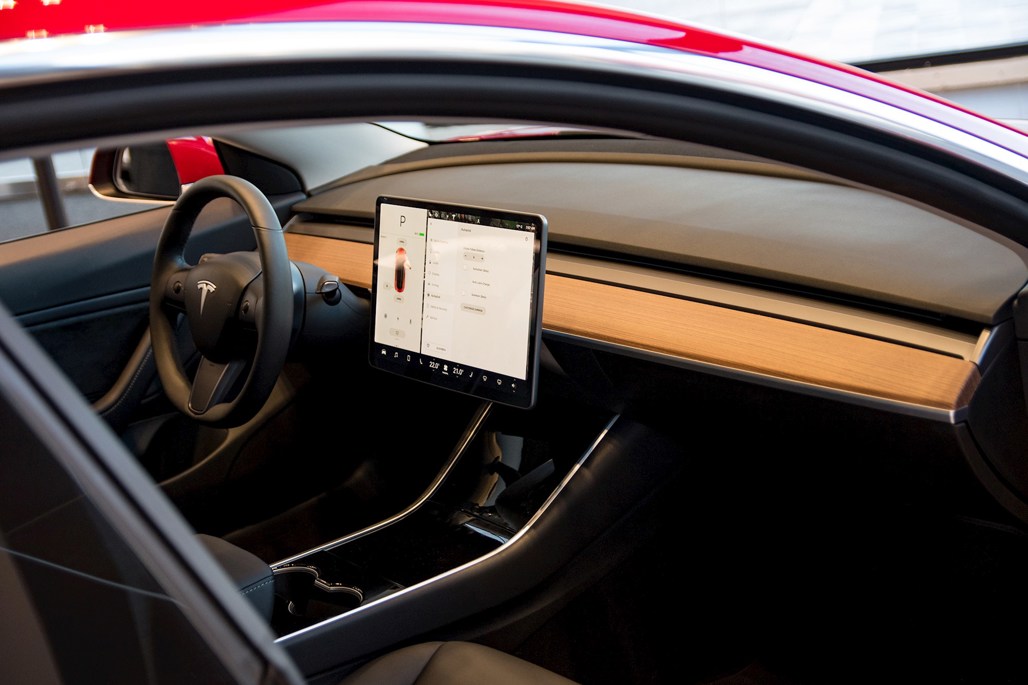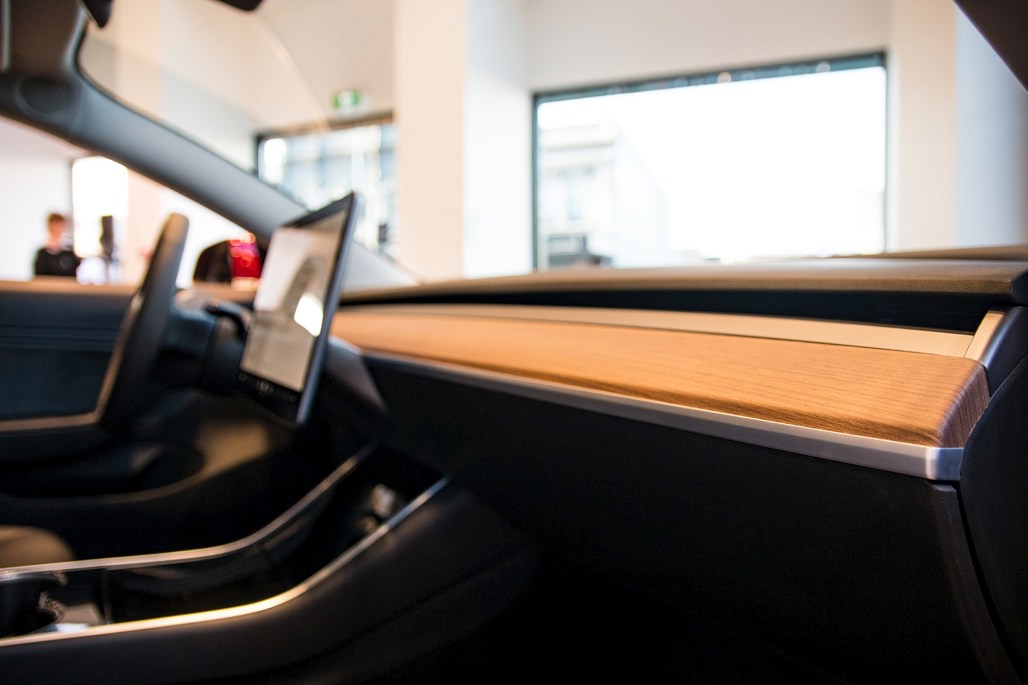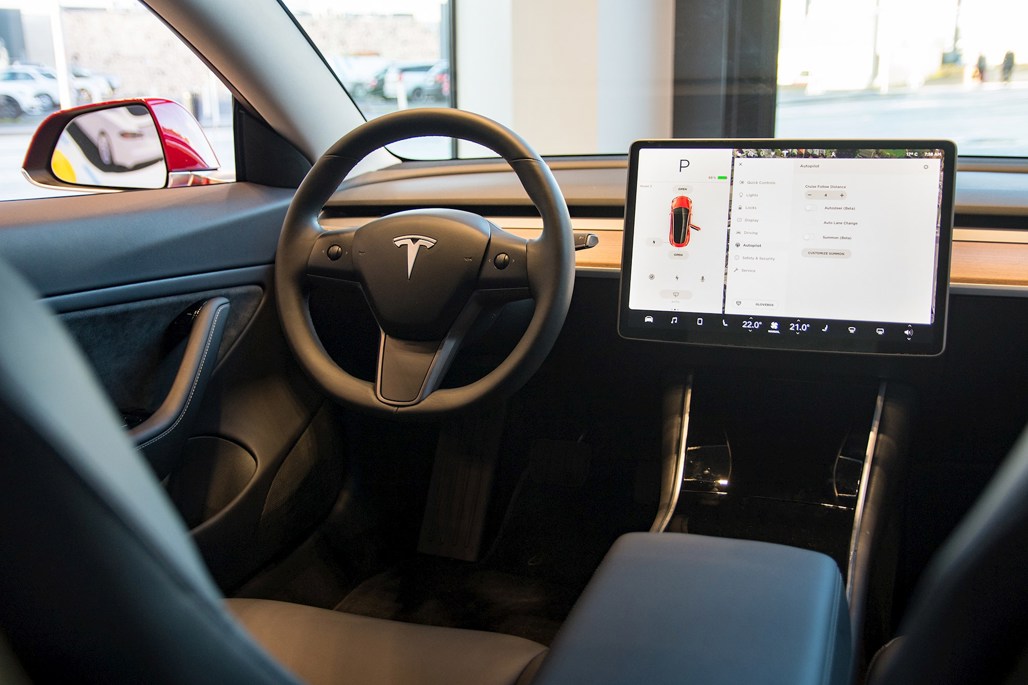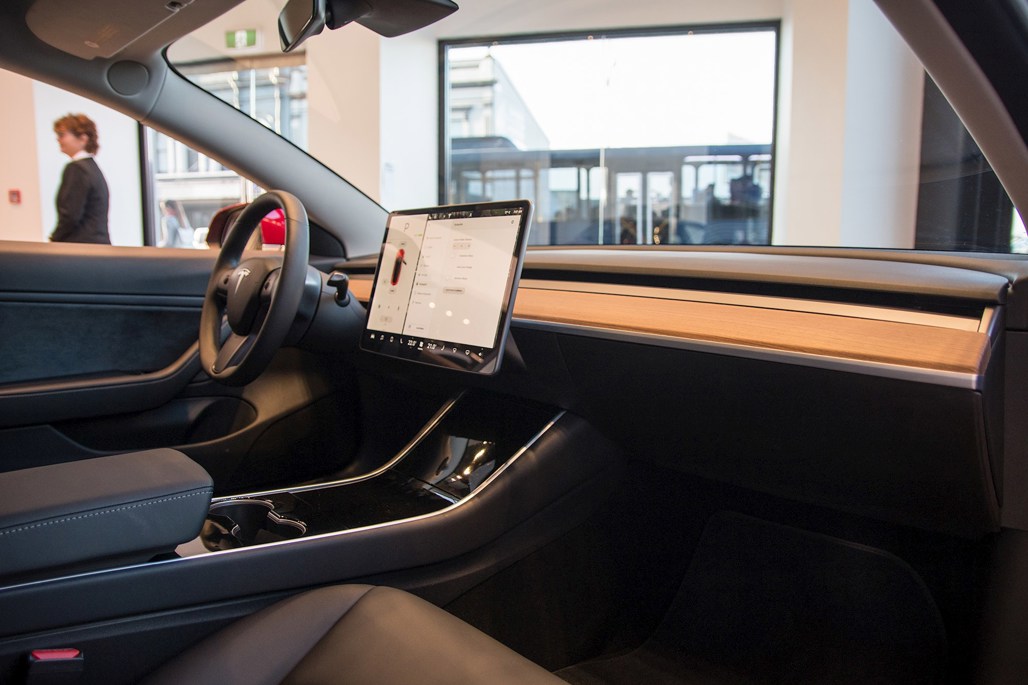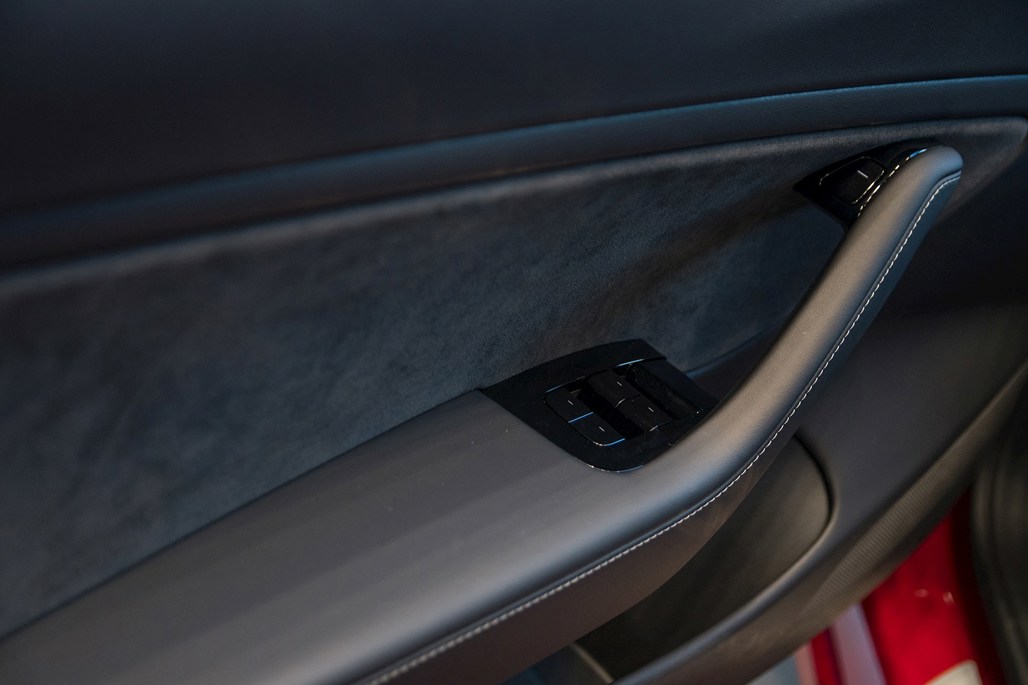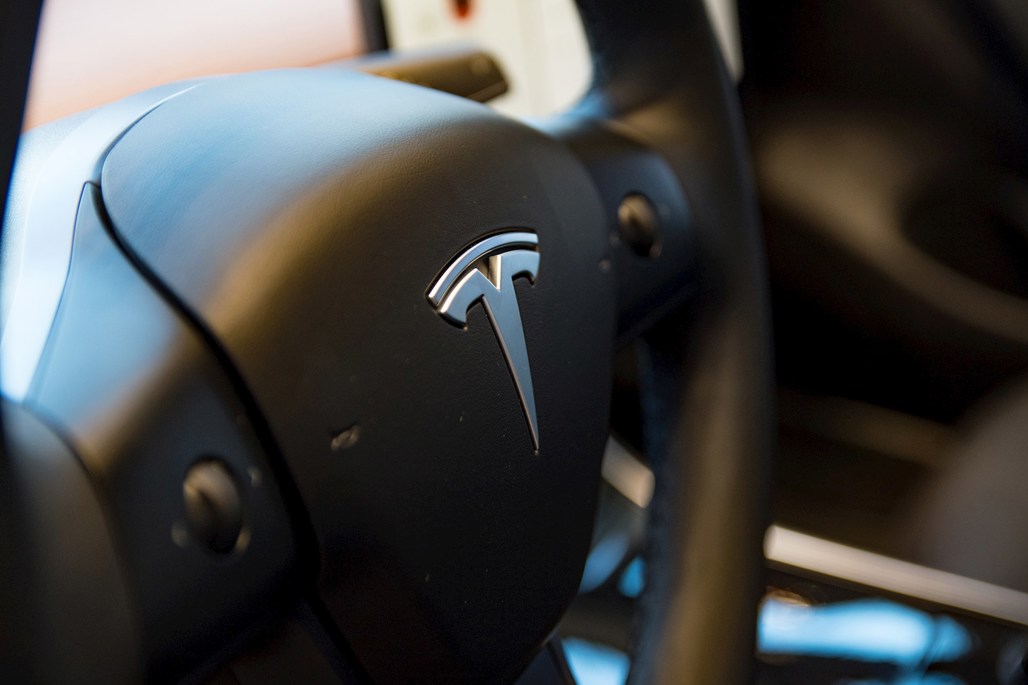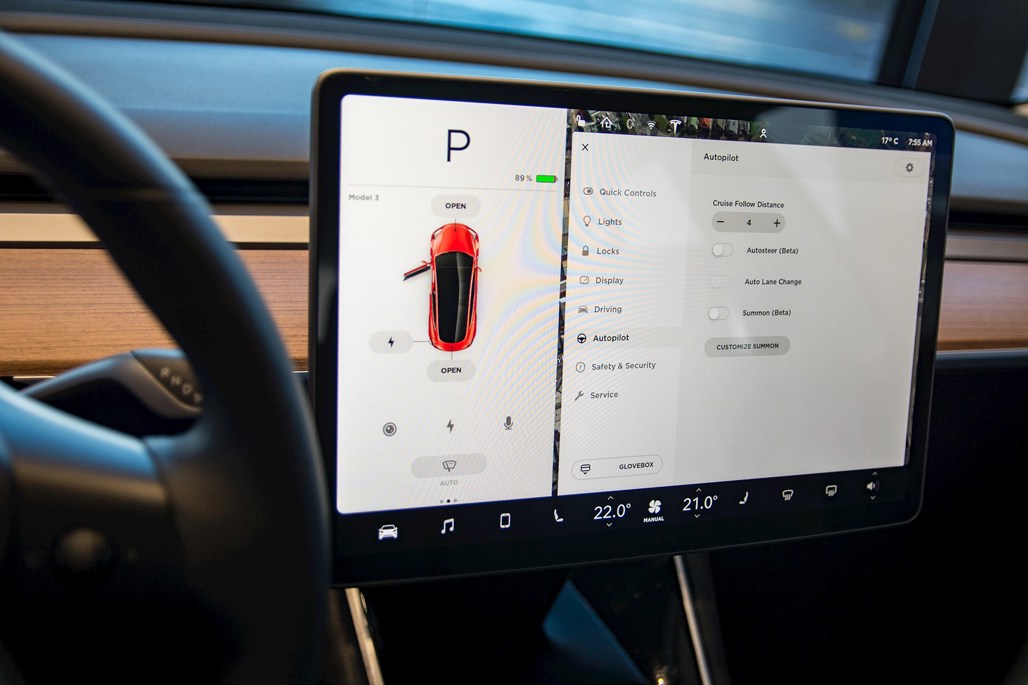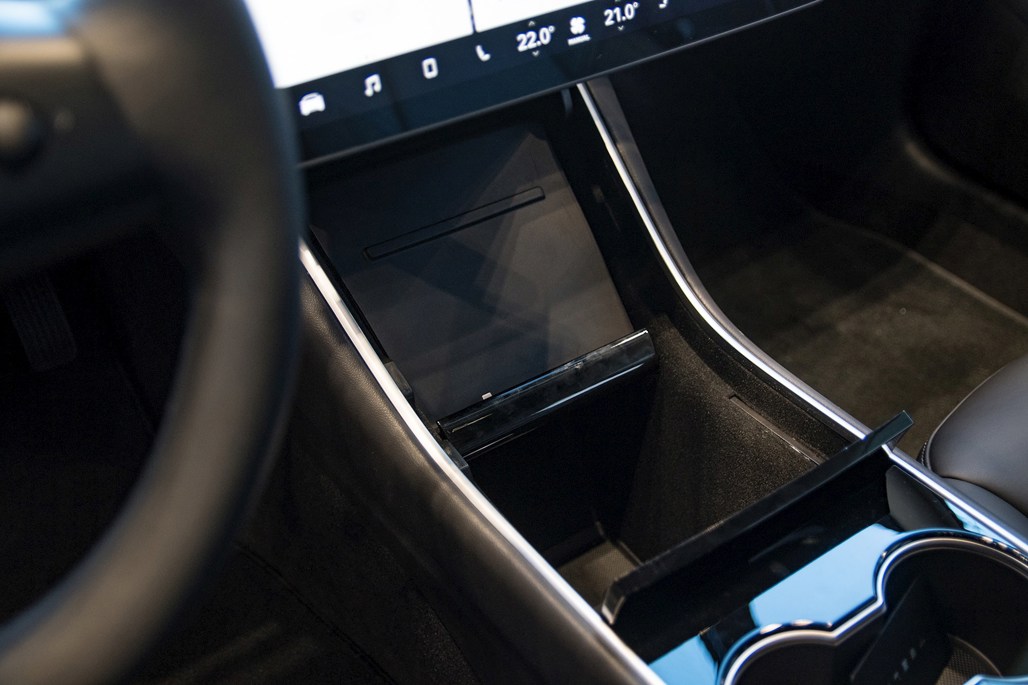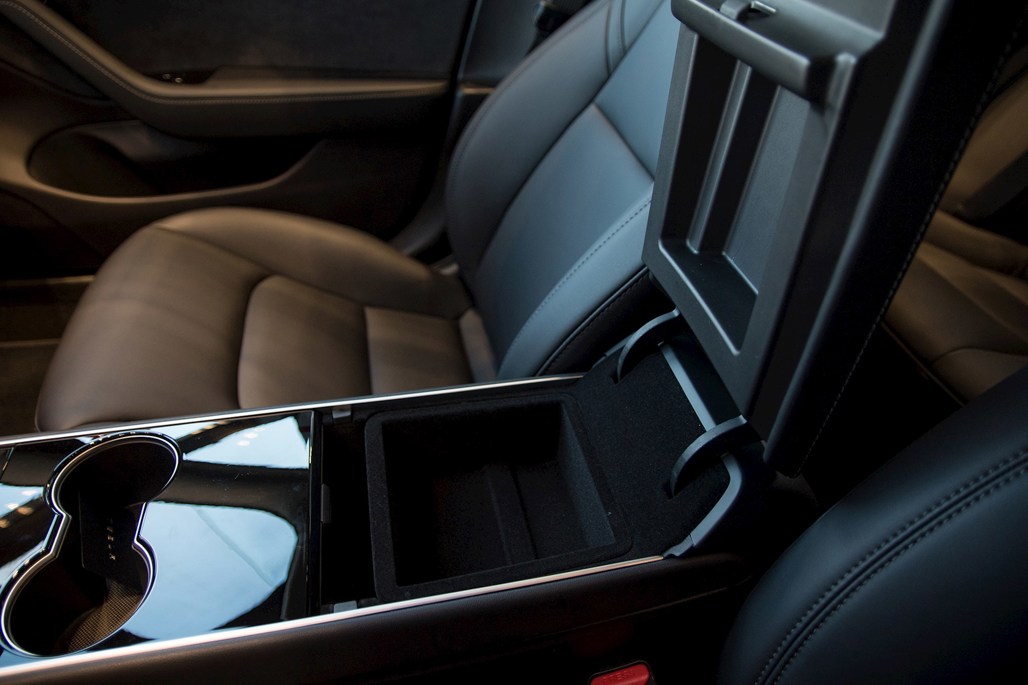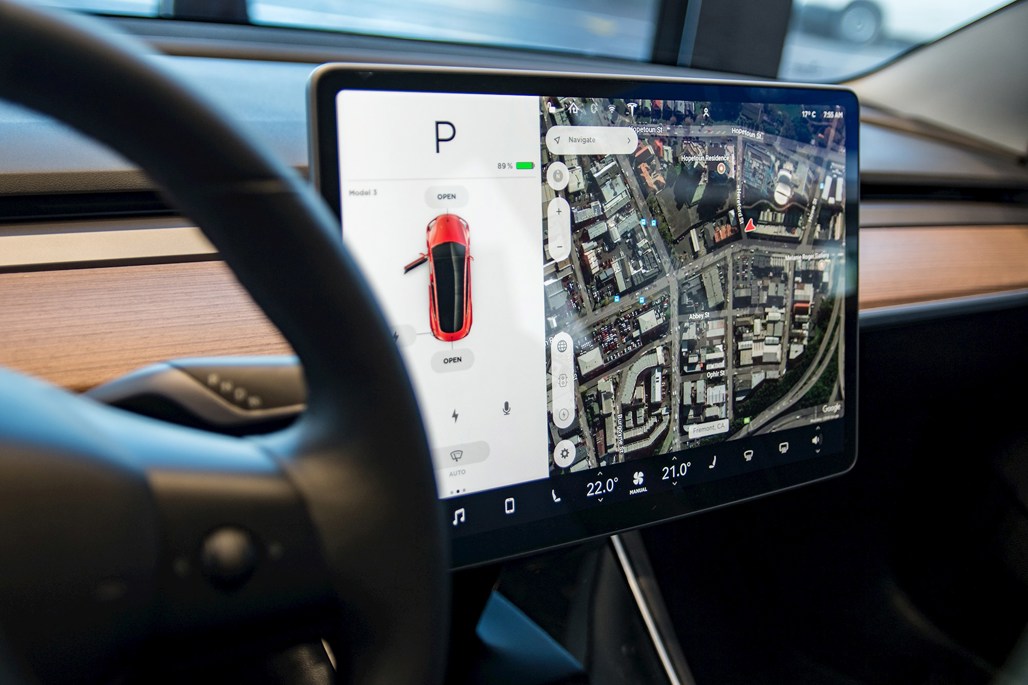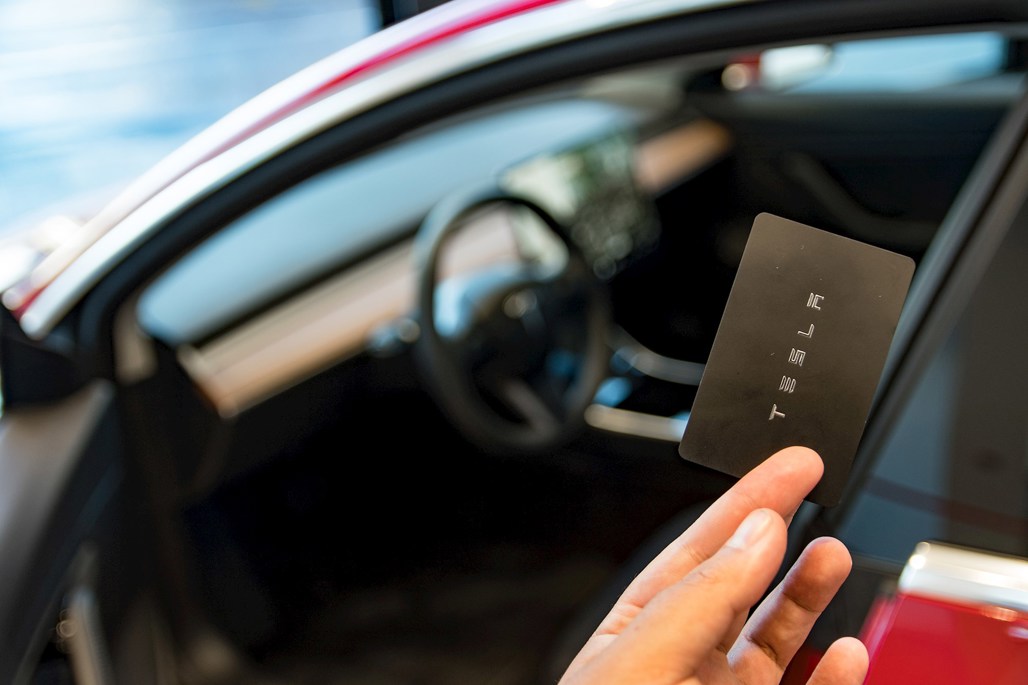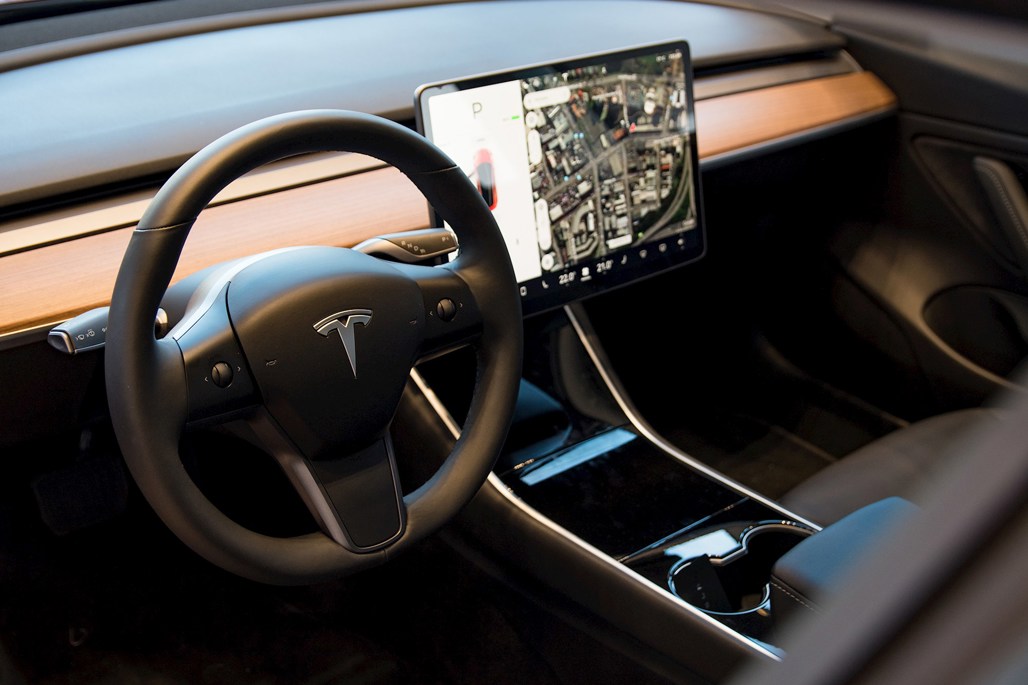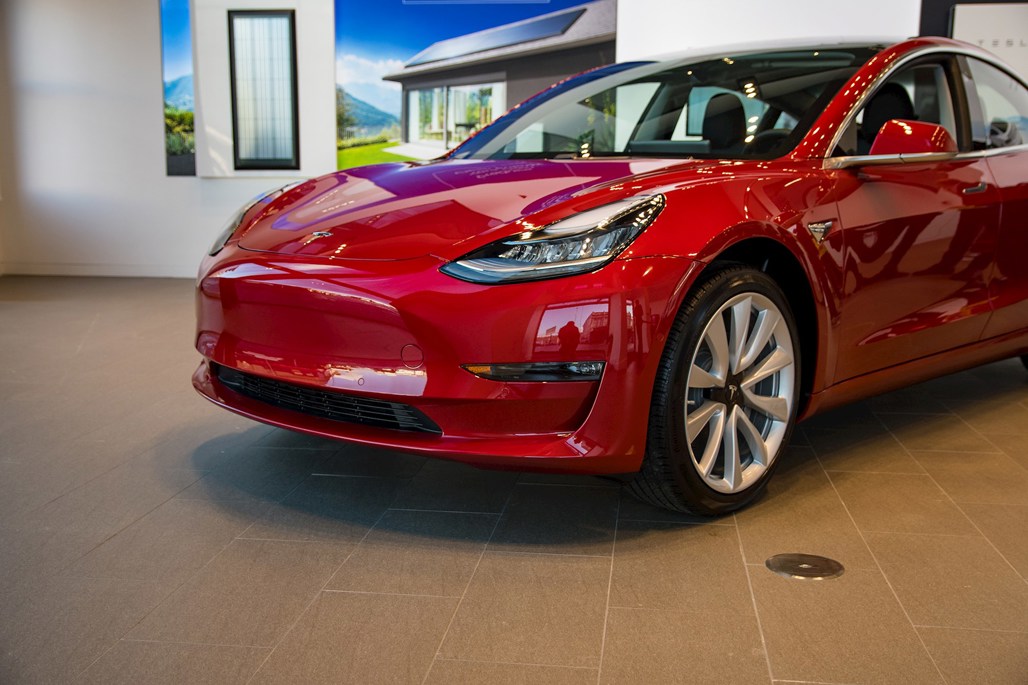For a smidge over a year, New Zealanders have watched as Tesla Model 3 deliveries started to unfold in the US. First CEO Elon Musk got one, then a small run of 30 production units were released to staffers as well as some of the manufacturer's most dedicated fans.
Production 'bottlenecks' became well publicised, with production even becoming suspended at certain points. But through the muck, Tesla's production output improved, and now things are humming along at 5,000 cars a week in July.
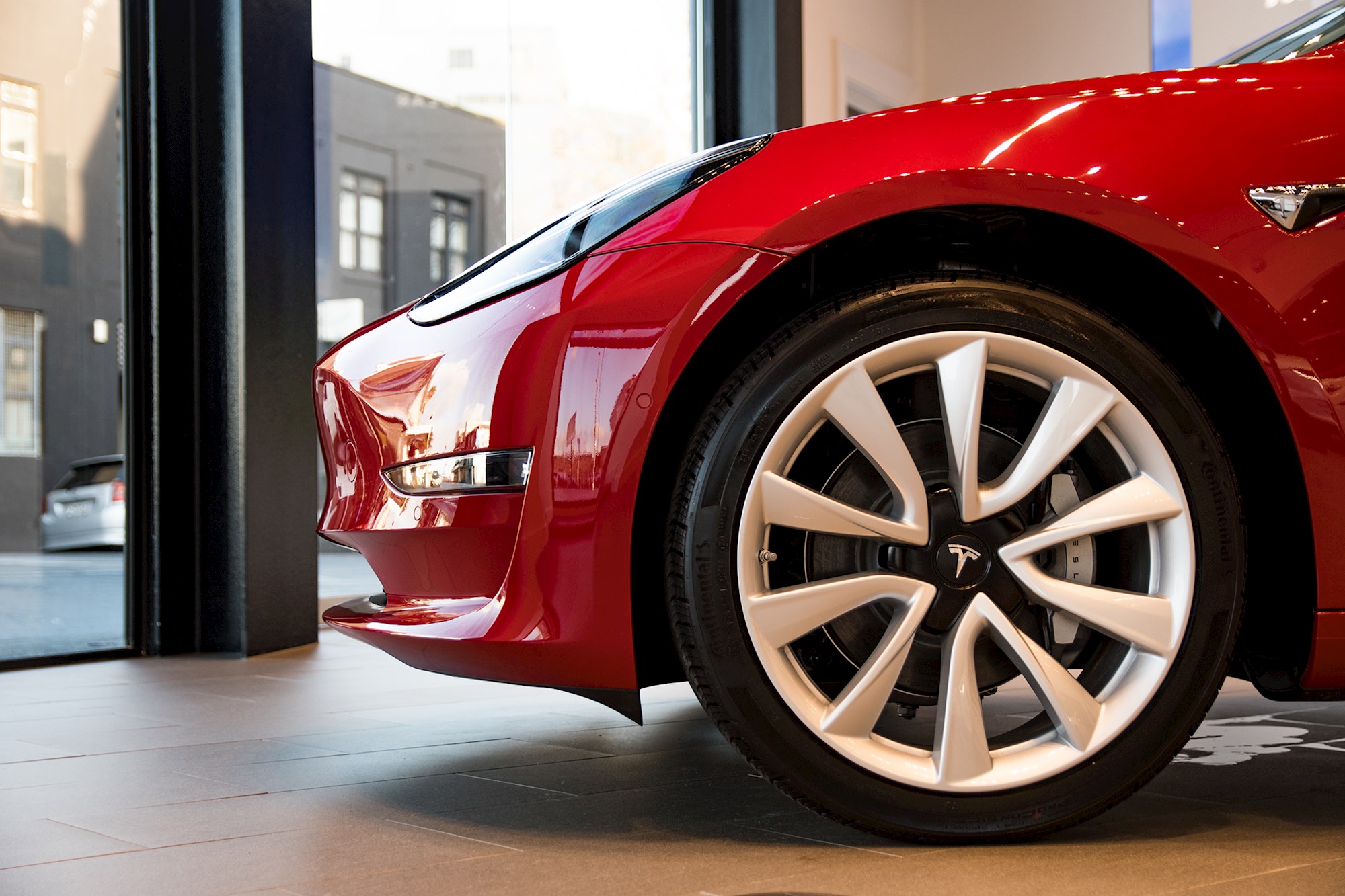
That might all sound like a bit of a mess, but silver linings are never far behind — all of the production malarkey has given those on the Model 3 reservation list (all 400,000+ of them ... ) a big injection of hype-fuelled FOMO.
So, even though it's 'old news', there was plenty of excitement for the Model 3's 'New Zealand debut' this morning in Auckland.
Tesla's new Auckland store on Karangahape road (yes, the same one that opened in June) was the scene of the new EV's first formal showing to New Zealand audiences. Journalists were given a sneak peek in the wee hours of the morning, with reservation holders to get their own first taste later on.
The car itself was one of the high-spec 'Premium Upgrades' package 75kWh rear-wheel drive Model 3s; coming with Tesla's luscious multi-coat red paint, improved interior trim, 19-inch wheels and more. With right-hand drive production still yet to commence in the US, this one was left-hand drive.
It's claimed that the 75kWh model can go 500km per charge, and accelerate to 100km/h in 5.1 seconds, though the more you test the latter the harder it would be to achieve the former.
There was no driving, nor any leading questions from the gallery (Tesla having specified ahead of time that no spokespeople would be present at the low-key reveal). The point of it all was for everyone to smell touch and feel a car once considered to be 'vapourware'.
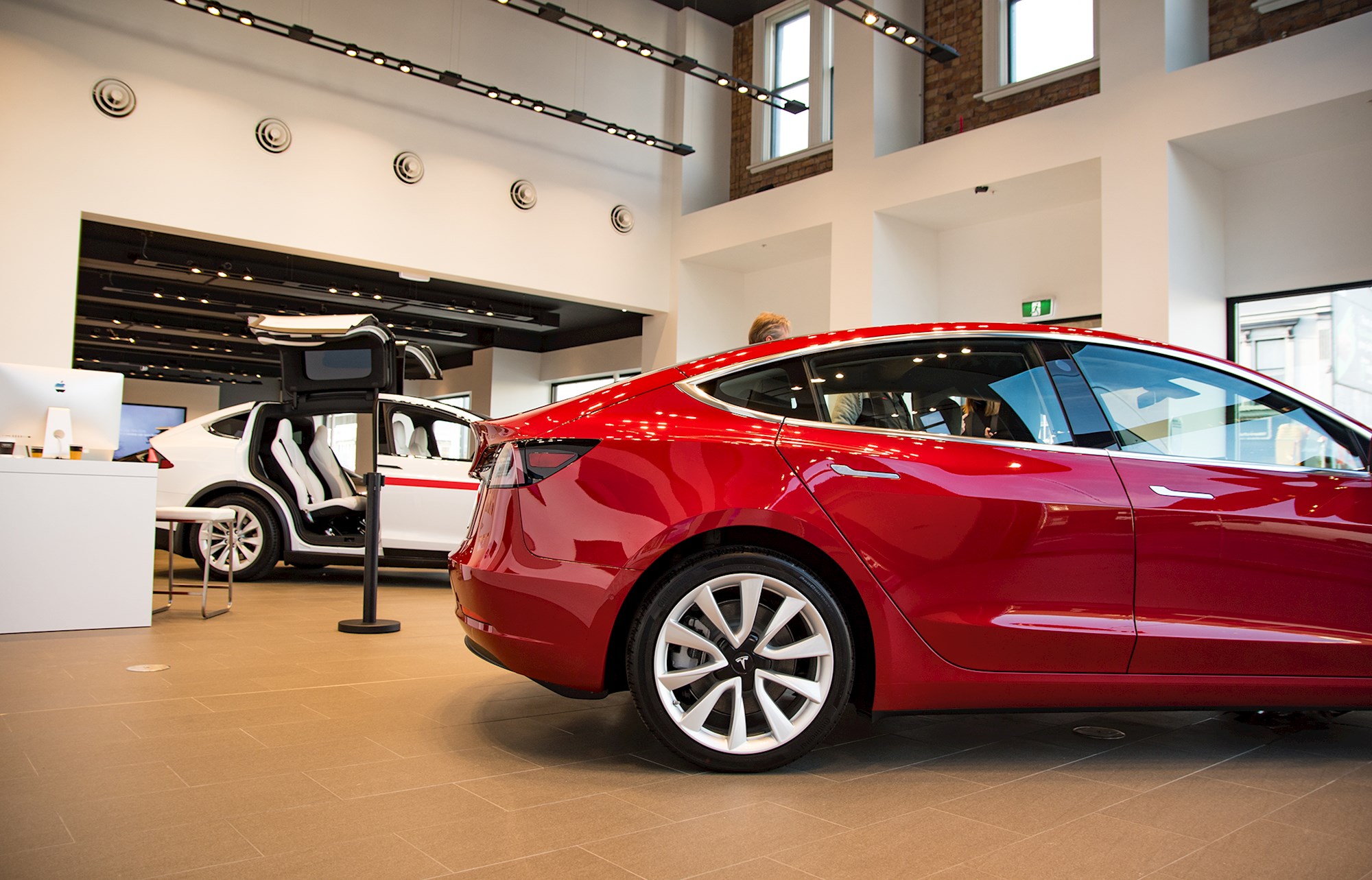
Inside and out, up and down, the first impression seeing the Model 3 up close in the real is minimalism. Exterior design is a shrunken version of what we're familiar with from the Model S, but minus some of the clutter. Gone is the faux grill — instead there's a contour that outlines where a grill would have been. Door handles sit flush with the bodywork (though they no longer 'present themselves' electronically, which is my preference anyway), and the upswept boot-lid neatly pinches the attractive tail end.
Most of the visual weight looks to have been carved out of the overhangs, which means that the Model 3 preserves most of the Model Ss cabin space while also gaining from having 'a wheel at each corner' like a go-kart.
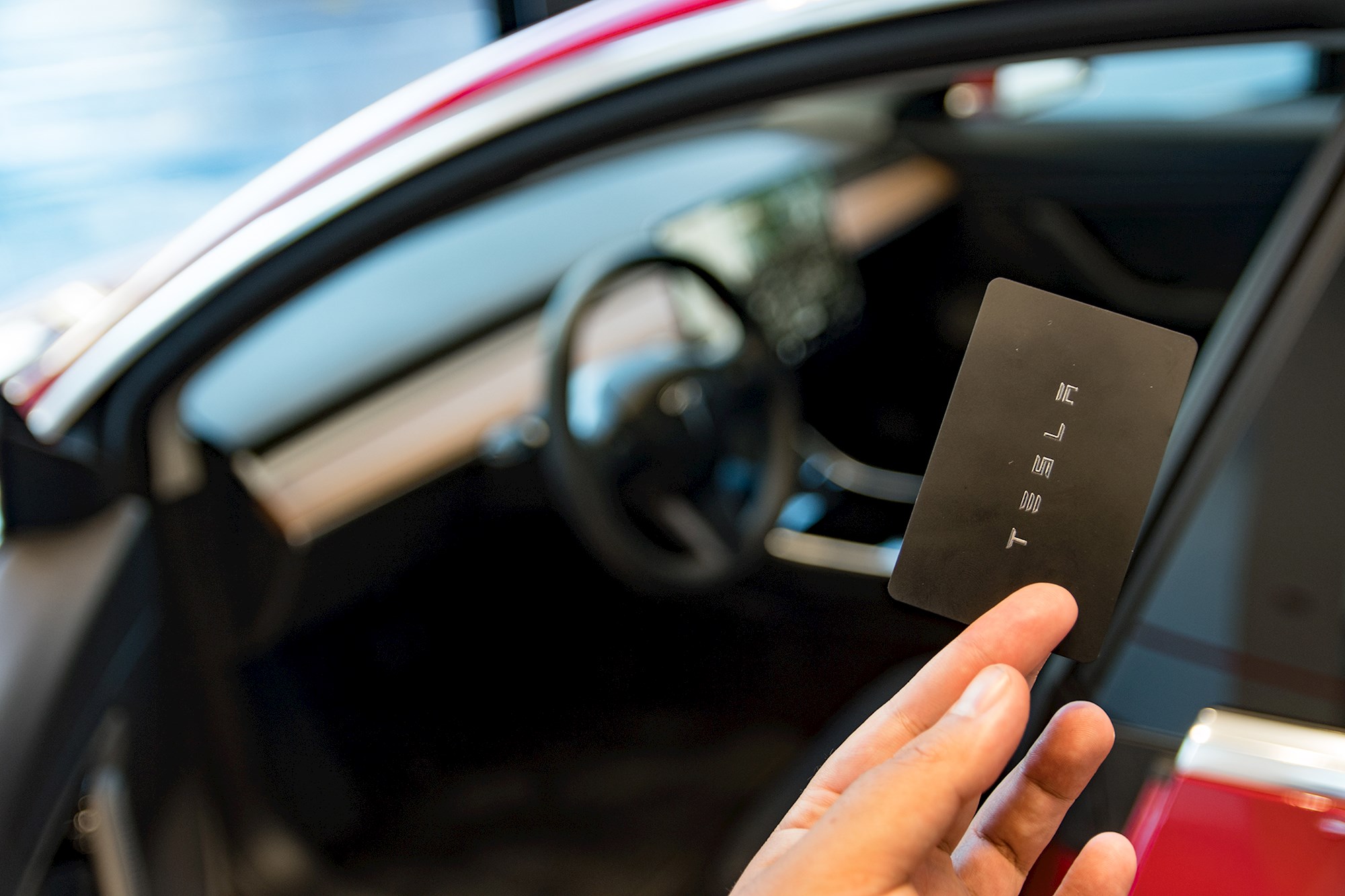
The Model 3 doesn't come with the miniature car–shaped key fob like its cousins. Instead owners get a key card, which can be placed on the B-pillar to unlock the vehicle. Though Tesla expect owners to primarily use their phones and the brand's app to lock and unlock the car instead.
Hopping into the rear seat first (there's plenty more to talk about with the front ... ), and seating feels plush and cushioned. Headroom isn't particularly ace — I'm not particularly tall and upright my head is two finger-widths from glancing the ceiling — but the Model 3's full-length glass roof ensures that none of it feels cramped or claustrophobic.
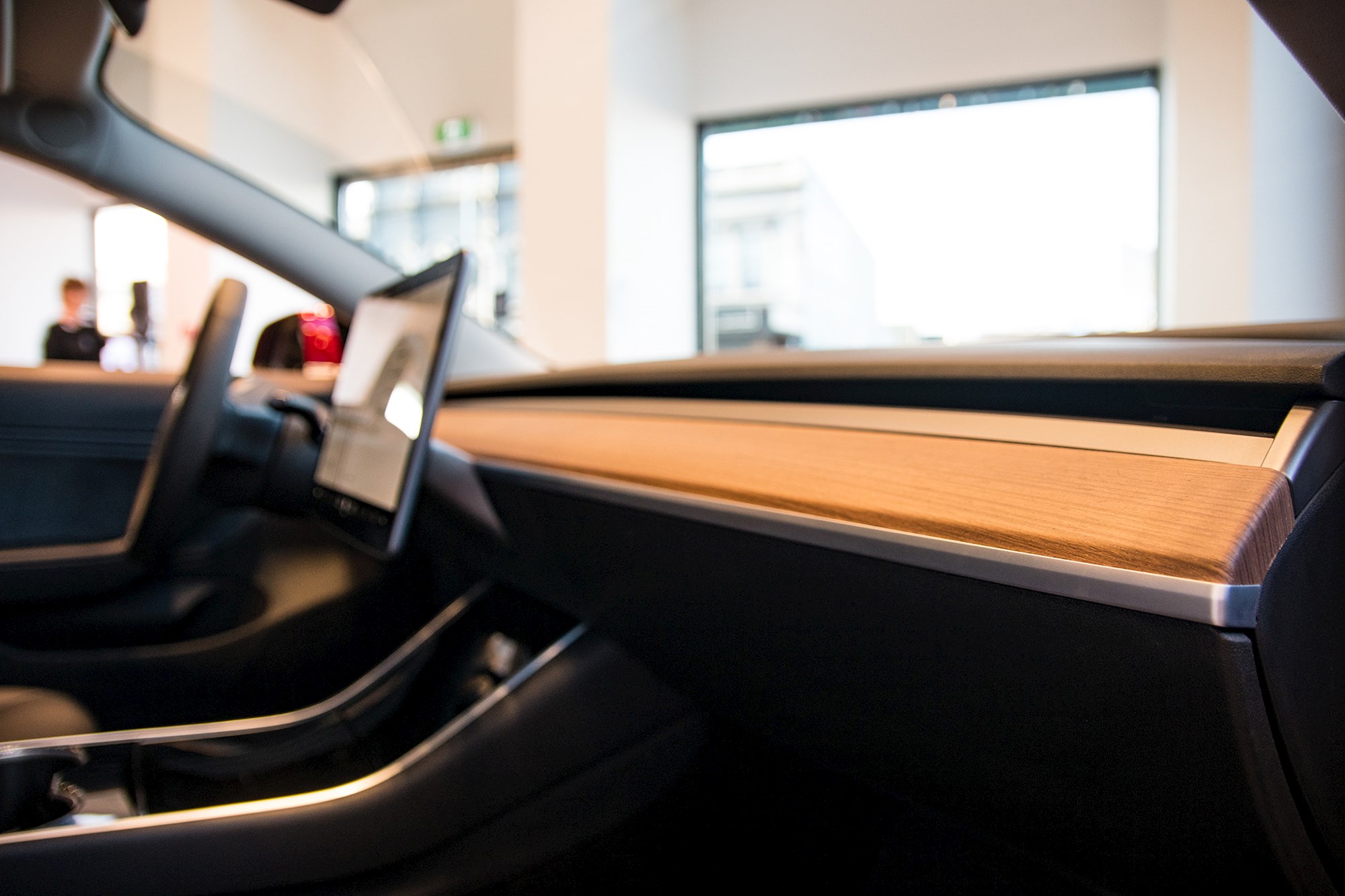
Yes, the front seat.
The Model 3's cabin is probably the most minimalist (there's that word again) on the market. The amount of moving parts is restricted to the steering wheel and its two scroll wheels, the windscreen wiper and indicator stalks, the magnetised clam-shell centre-console openings, the window controls, door-releases, and the concealed air-conditioning vents.
Everything else — from air-conditioning and music controls to the lights and even the glovebox latch — are all accessible through the 15-inch touchscreen bolted to the middle of the dashboard.
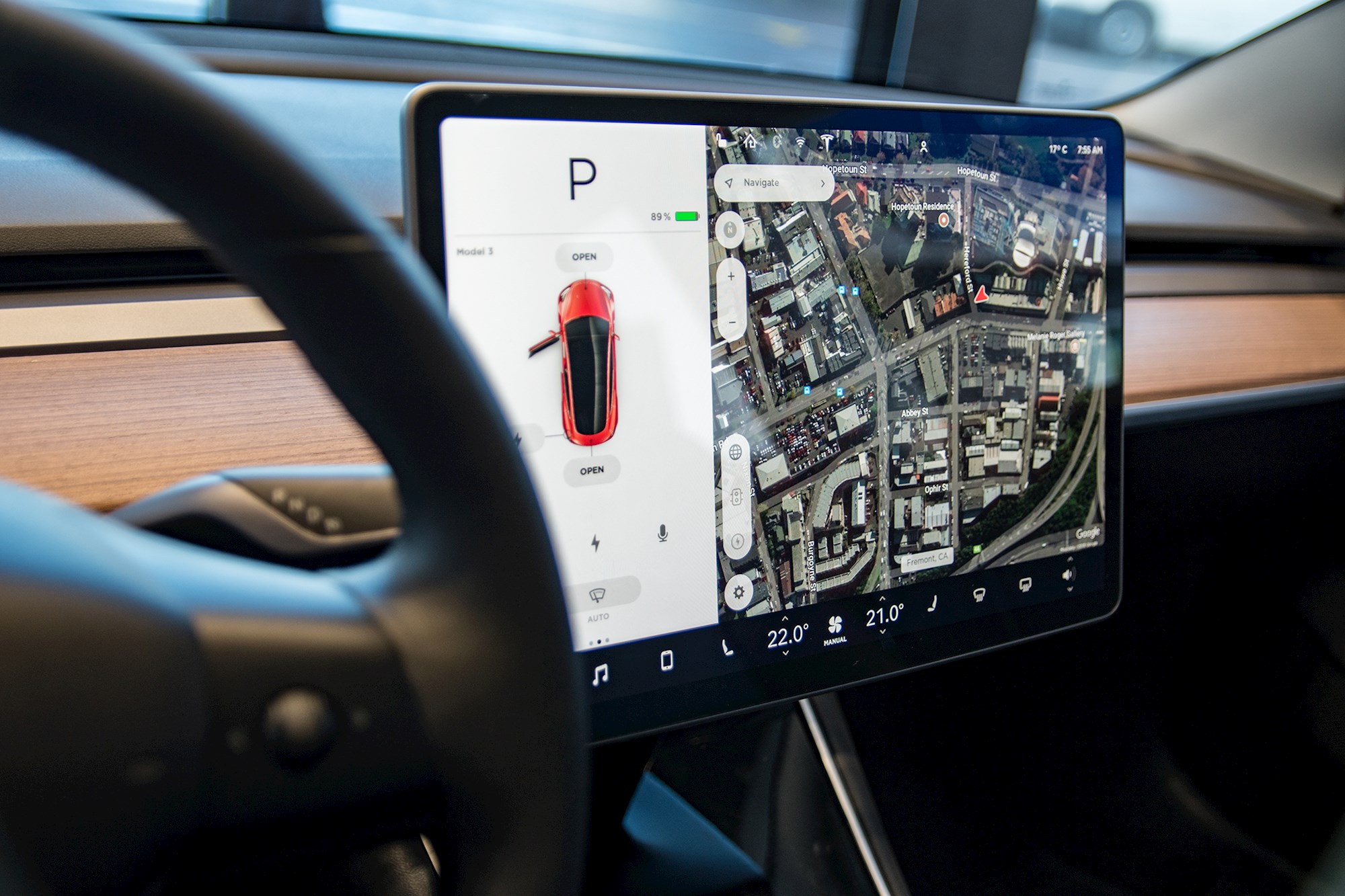
Your rate of like or dislike for said screen is probably most dependant on how savvy you are with technology. 'Digital natives' (ugh) will probably feel right at home with enough time behind the wheel, while those who prefer more analogue arrangements are certain to struggle.
I'm a self-confessed button lover, particularly when it comes to making car adjustments on the run like scrolling through songs or tweaking the temperature. But having recently driven the Model S, it's surprisingly easy to get your head around using such a large screen while in motion.
Although admittedly, many of the Model S's more vital functions — like 'Autopilot' — have their own devoted physical buttons.
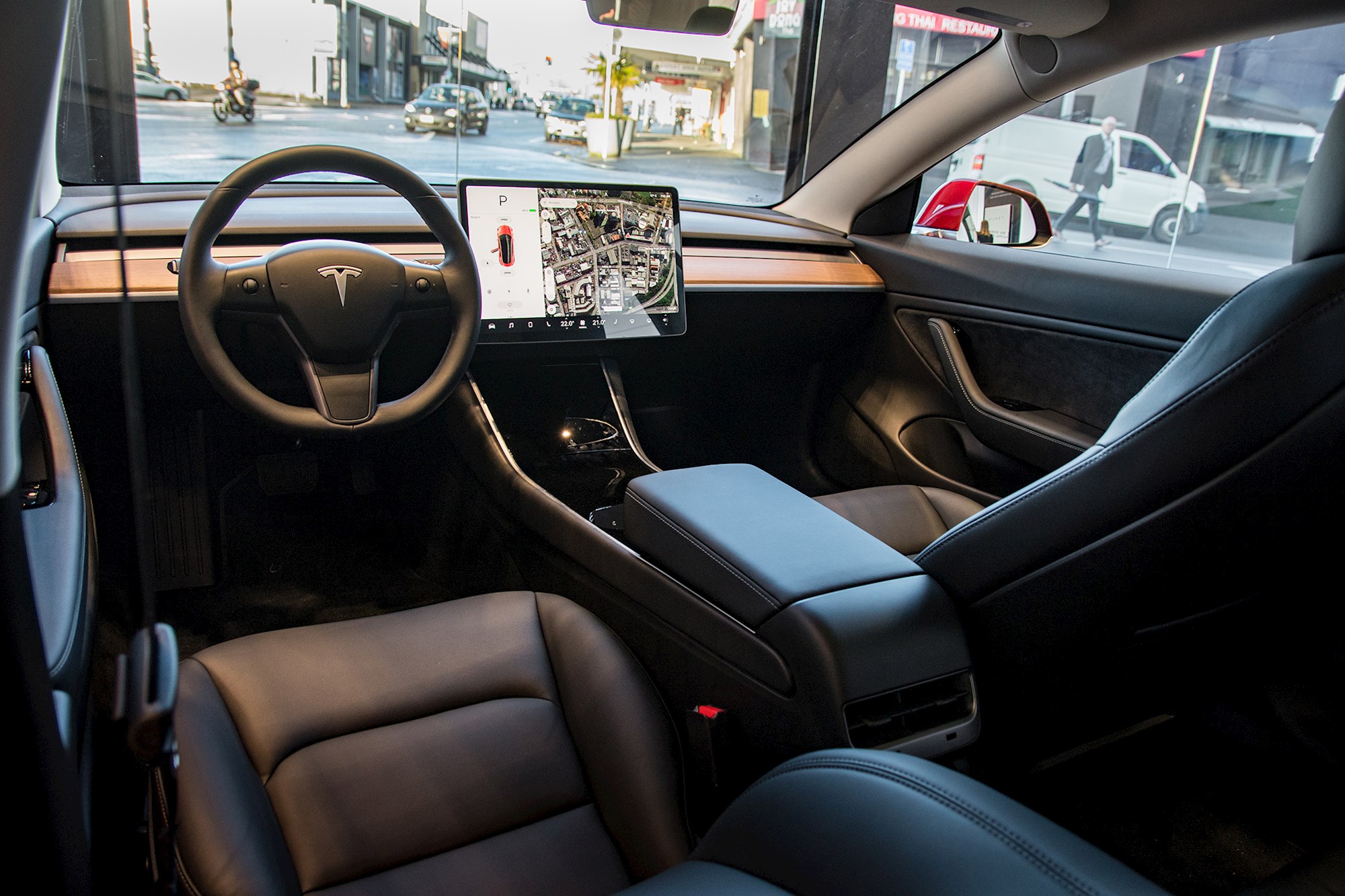
Those who have scoured the internet for Model 3 walkthrough videos will likely agree when I say the most jaw-dropping (and simultaneously divisive) element of the Model 3 cabin is the air conditioning.
As I mentioned, it's all controlled from within the screen. But rather than ejecting air out of a multitude of vents dotted across the dash, the system instead spurts air from fans concealed in the thick black channel that goes all the way from the left-hand side of the dash to the right. Direction, intensity, and temperature is all controlled via the screen — a fun tool to play with while stationary, and probably the most tiresome thing to try and set-up while moving.
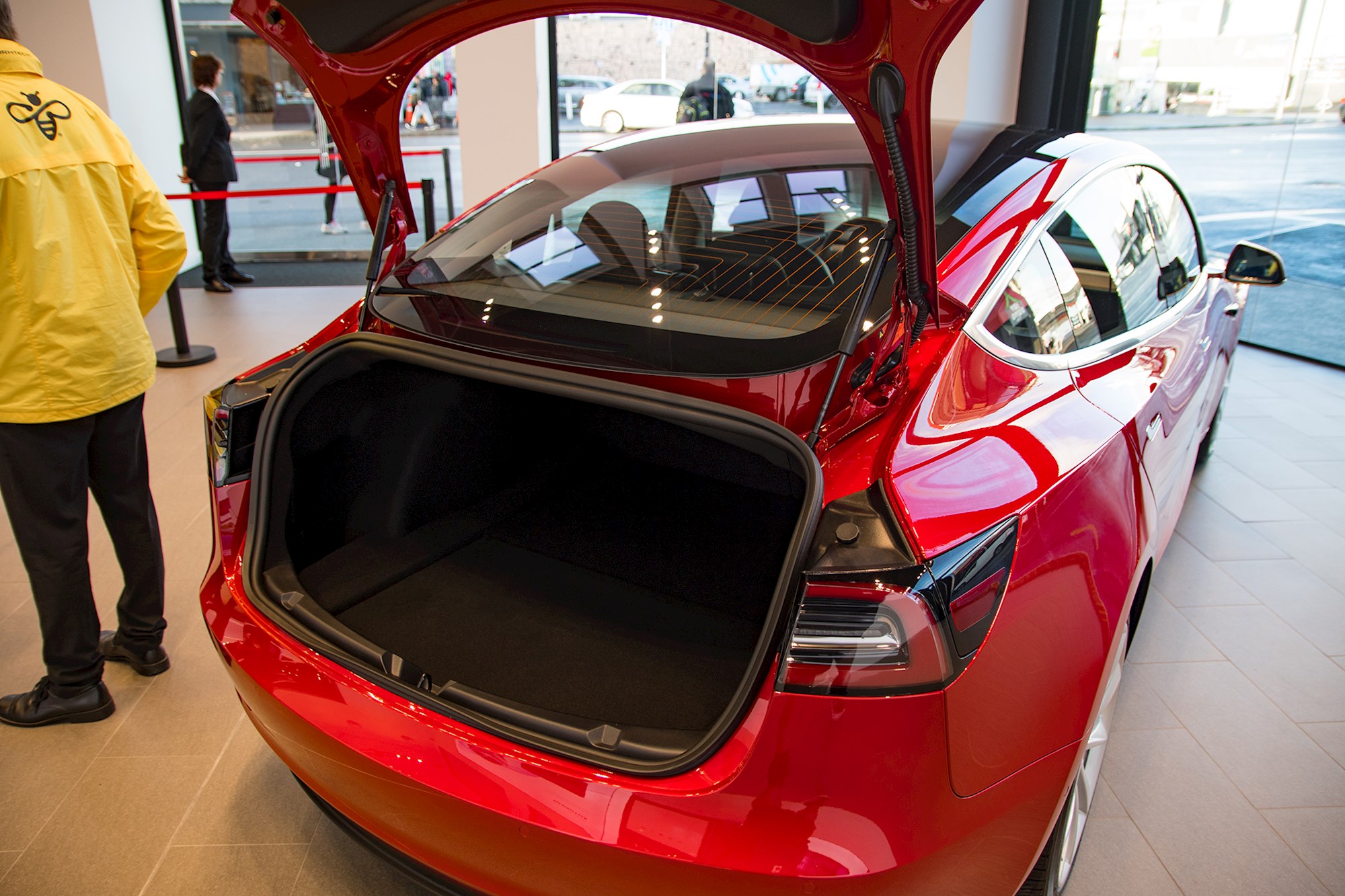
Fit and finish inside looked and felt like a subtle improvement over the Model S, even though this is the brand's entry level car. It was largely the same for the exterior, though some gaps did appear a little bigger than others; particularly around the boot-lid.
On the note of the boot, despite the Model 3's coupe-ish looks it isn't a liftback. This means the boot opens as it would on a traditional three-box sedan — though the actual opening is rather small and awkwardly shaped. Thankfully the space inside is cavernous (420L), and supposedly big enough to fit a full bicycle or double bed.
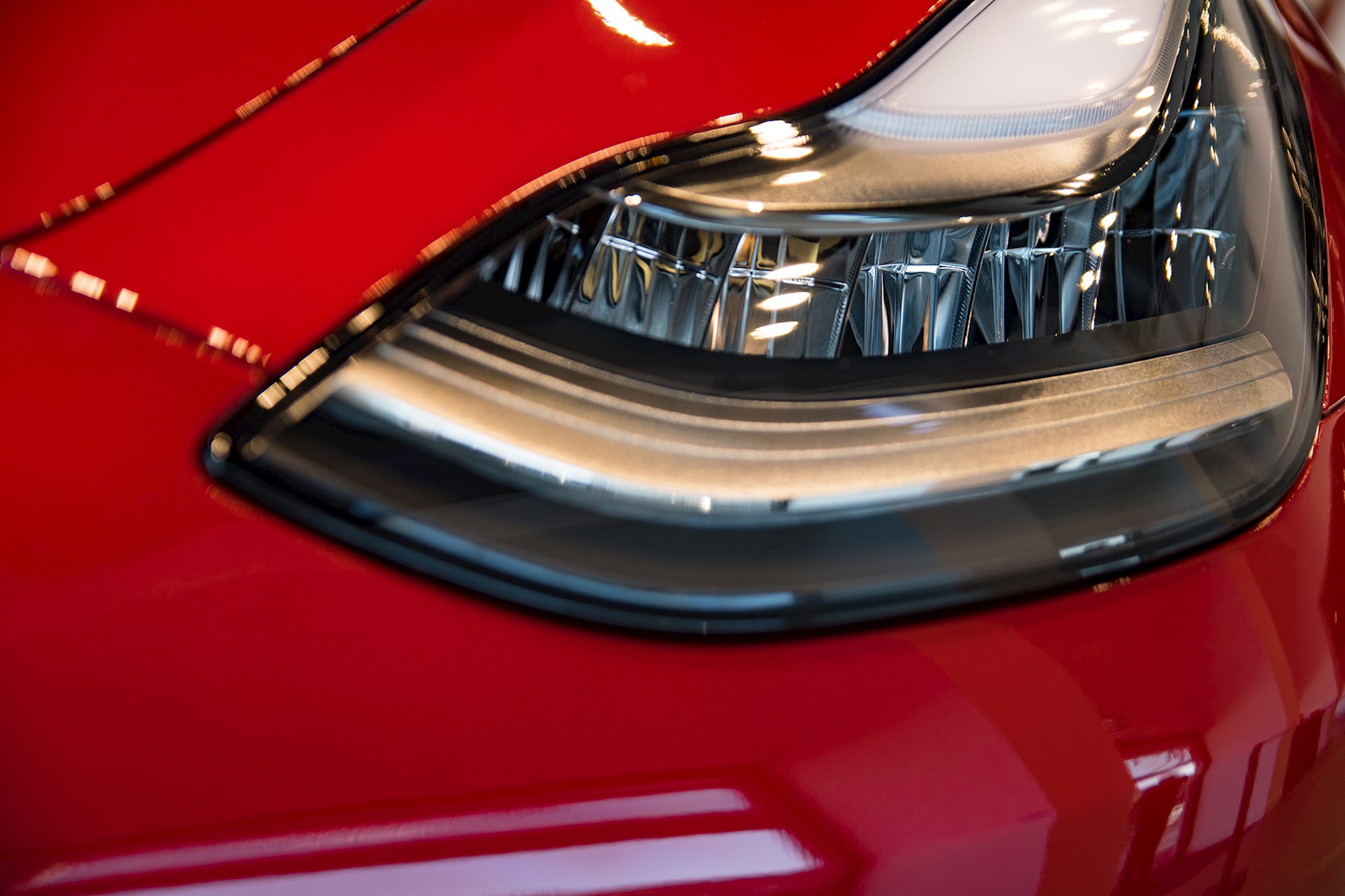
This model retails for US$55,000 on the other side of the world, which equates to just over $80,000 here. No domestic pricing has been confirmed thus far, but when it does land in New Zealand expect it to come at a bit of a premium over American prices.
For now though, this fleeting tour is the closest Kiwis will get to driving the Model 3. Right-hand drive production is expected to kick off in the middle of next year ... deliveries to places like ours soon after.
